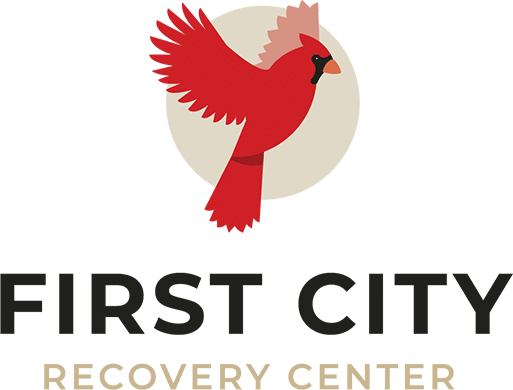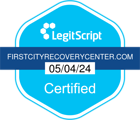Fentanyl Addiction Treatment in Kokomo, IN
Synthetic opioids are substances that manufacturers create in the laboratory. These substances target sections in the brain that produce pain-relieving effects, and they act on the same areas in the brain that natural opioids do. Natural opioids include codeine and morphine. In contrast, people create natural opioids from the seeds of the poppy plant.
Fentanyl is one type of synthetic opioid, and like other opioids, it carries the potential for abuse and addiction.
Table of Contents
ToggleMore About Fentanyl
Fentanyl is a lot like morphine, but fentanyl is 50 to 100 times more potent. Physicians prescribe fentanyl for their patients to treat severe pain. Therefore, those with terminal illnesses will typically be prescribed fentanyl. After surgery, people may receive prescriptions for fentanyl as well. If someone is experiencing severe pain but is already tolerant to opioid medications, this person will likely receive a prescription for fentanyl.
Other Forms of Fentanyl
Lazanda
Lazanda is a nasal spray prescribed only for patients 18 years of age and older. To receive a prescription, the patient must already be tolerant to opioid medications. These individuals are typically cancer patients who are currently being treated with around-the-clock narcotics, so the Lazanda can be administered when the patient feels breakthrough pain. This pain may be severe, but it usually lasts for a short period of time.
Abstral
Abstral is a tablet that may only be prescribed for cancer patients who are tolerant to other opioid pain relievers. It is also used when the patient experiences breakthrough pain while on other pain medications.
Subsys
Subsys is a sublingual spray for adults 18 years of age and older for treating breakthrough pain. They must also be receiving opioid medications around the clock. The patients can administer this medication under their tongues, and it offers them immediate relief from breakthrough pain.
Sublimaze
Sublimaze is a fentanyl citrate that medical personnel inject for severe pain before or after a surgery. It is also prescribed for those tolerant to opioid medications.
Duragesic
Duragesic is a fentanyl patch that relieves pain that is expected to last for a long time.
Actiq
Actiq is a lozenge prescribed for patients 16 years of age and older. These patients must already be tolerant to opioid pain relievers, and they must be taking other opioids for the relief of cancer pain around the clock.
Fentanyl relieves pain in the same way that other opioids relieve pain. It binds to the opioid receptors in the brain that regulate pain and the emotions. It also increases the production of dopamine that is released in your brain when you expect to receive a reward.
The Potential for Abuse
The Drug Enforcement Administration, or DEA, lists fentanyl as a Schedule II drug under the Controlled Substances Act. This means that fentanyl has the potential to be abused. If this were not the case, the DEA would not seek to control the substance. Under Schedule II, fentanyl is described as:
• A substance that has the high potential to be abused
• A substance that may be prescribed to treat a medical condition in the United States or may be used in a medical setting with “severe restrictions”
• A substance with the potential for causing a severe physical or psychological dependence if someone abuses it
According to the National Institute on Drug Abuse, along with a strong potential for abuse, fentanyl is also highly potent. This leads officials at the institute to believe that it’s very possible that we could have a serious fentanyl epidemic in this country in the future. This is what makes obtaining addiction treatment from a rehab facility so important.
Some people aren’t obtaining fentanyl from a physician, so they are not taking it as prescribed by a doctor. They could be ingesting large amounts of fentanyl in order to experience the euphoria and sense of calmness similar to that which comes from heroin. These people are likely purchasing fentanyl illegally.
The Side Effects of Fentanyl
Fentanyl is so alluring because of the pleasant feelings that people experience when they use it, but it also causes negative symptoms if abused. Such negative symptoms include:
• Drowsiness
• Itching
• Nausea and vomiting
• Constipation
• Blurred vision
• Dizziness
• Headaches
• Slower breathing
Opioids present a high risk of overdose for people using the substance for the first time. If someone without a tolerance for opioids uses fentanyl for the first time, the risk of overdose increases exponentially. Abusing fentanyl can lead to respiratory depression or respiratory arrest, which is why users who have become dependent should seek professional treatment.
What Is Respiratory Depression?
Respiratory depression occurs when a person’s breathing slows down and becomes very shallow. Because the brain is in control of respiration, anything that affects the central nervous system will also affect the person’s breathing. When this occurs, the person must get medical attention right away. Without medical help, the person is in danger of dying.
Respiratory depression occurs when carbon dioxide is not removed from the body in a sufficient manner, and oxygen is not able to replace it. When this occurs, carbon dioxide builds up in the bloodstream, and several symptoms begin. The person may begin to take quicker, shallower breaths. Normally, people breathe at a rate of 12 to 20 breaths per minute. When respiratory depression occurs, this rate slows down to 8 to 10 breaths per minute.
One of the most common causes of respiratory depression is opioid misuse.
What Is Respiratory Arrest?
Respiratory arrest means that the person has stopped breathing for a prolonged period of time, but the heart is still active. When this occurs, it is a medical emergency, and the person needs immediate attention. The condition is called “cardiac arrest” when the person’s breathing has stopped, and the heart is no longer active. In this case, the person is not responsive.
A drug overdose is a common reason that people experience respiratory arrest.
The Increased Danger of Using Fentanyl
When fentanyl is mixed with other drugs, the potential for overdose increases even further. The danger is that people do not necessarily know that the drugs they purchased illegally from a dealer were laced with fentanyl. These drugs include cocaine, Xanax, counterfeit oxycodone, Percocet and counterfeit alprazolam.
In 2020, 203 people died in San Diego County because of overdoses of fentanyl. This is an increase in fentanyl-related deaths in the county; in 2019, the county only recorded 152 overdoses due to fentanyl. These deaths may have been the result of the individuals unknowingly using other substances laced with fentanyl. The DEA warned the public that illegal drugs purchased from dealers have the potential to contain deadly doses of fentanyl.
Even though the DEA classifies fentanyl as a highly addictive drug, many people are confident that they can ingest this drug without the risk of experiencing an overdose or causing an addiction to develop.
Fentanyl targets the central nervous system and causes the brain to release significant amounts of dopamine. As massive amounts of dopamine are released during continued fentanyl use, the brain becomes accustomed to the amount of fentanyl that the person ingests. Over time, the person stops experiencing the same effects that were experienced the first time he or she used fentanyl. The response to this lowered reaction is to increase the amount of fentanyl that must be ingested in order to obtain the desired feelings.
This described experience also leads to an unfortunate effect: The body begins to lose its ability to produce dopamine, so it is unable to release enough dopamine to prevent the person from experiencing bouts of depression when the person isn’t taking any substances.
The only way to break the cycle of drug use, dependence and depression is to receive treatment for a fentanyl addiction. At a rehab center, fentanyl users will learn the signs of addiction and the steps necessary to overcome it.
Signs of Dependence or Addiction to Fentanyl
Because people who are legally prescribed fentanyl experience the tolerance described above, they might begin to look to illicit methods of procuring more fentanyl. Tolerance means that a person does not experience the same feelings they did when they first took the substance. This is why they must increase the amount of fentanyl so that they can feel the “high” of the past. Anyone who feels they have to constantly take more is at risk of an addiction.
Fentanyl Withdrawal
Reducing or stopping the use of fentanyl causes withdrawal symptoms. These include:
• Severe cravings for the drug
• The inability to control leg movements
• Goosebumps and cold flashes
• Vomiting and diarrhea
• Difficulties sleeping
• Pain in the bones and muscles
Not only is it potentially dangerous to stop using fentanyl “cold turkey,” but it is also highly uncomfortable to experience withdrawal symptoms without professional help. Rather than go through the withdrawal process on your own, you or your loved one may choose enter the drug detox program at First City Recovery Center.
The fentanyl withdrawal process may be so uncomfortable that your loved one cannot tolerate it. This would cause him or her to seek fentanyl so that he or she can relieve their symptoms. A better option is for this individual to enter our medical detox program. In our drug detox program, our staff will control your loved one’s withdrawal symptoms so that he or she can tolerate them while the fentanyl safely leaves the body. Our medical personnel ensure that our clients are in good condition by monitoring their hearts and other vital statistics. These professionals also administer medications that help our patients to experience the process more comfortably.
After the detoxification process is over, your loved one may obtain treatment for his or her substance use disorder.
Getting Sober at First City Recovery Center
Obtaining treatment in a rehab center is a necessary step in becoming sober again. Even though this is true, it isn’t always easy to convince your loved one to go to a drug rehab center. The best chance that you will have to convince your loved one to come to First City Recovery Center is for you to gather as much information about the process as possible.
Your loved one may benefit from our medical detox program, and once their body is free of the drug, they are ready for treatment for addiction or dependency on fentanyl. In addition, we offer dual diagnosis programs that treat substance use disorder along with any mental health disorders. In the United States, 7.7 million adults have been diagnosed with a mental health disorder and a substance use disorder at the same time. If your loved one is dealing with an undiagnosed mental health condition, we can treat him or her for that concern in addition to the substance use disorder in our dual diagnosis program.
We also have several outpatient programs, including intensive outpatient programs, partial hospitalization programs and day programs to help individuals overcome drug addiction. Your loved one will have the opportunity to engage in individual therapy, group therapy and holistic therapy in our programs. Our professionals will tailor an individualized treatment program to help you or your loved one overcome an addiction to fentanyl. Contact us today to learn more.

MD, Psychiatrist
Dr. Vahid Osman, MD is a psychiatry specialist in Indianapolis, IN.
Dr. Osman completed a residency at Austin State Hospital. He has over 32 years of experience in Psychiatry & Behavioral Health. He is board certified by the American Board of Psychiatry and Neurology.




